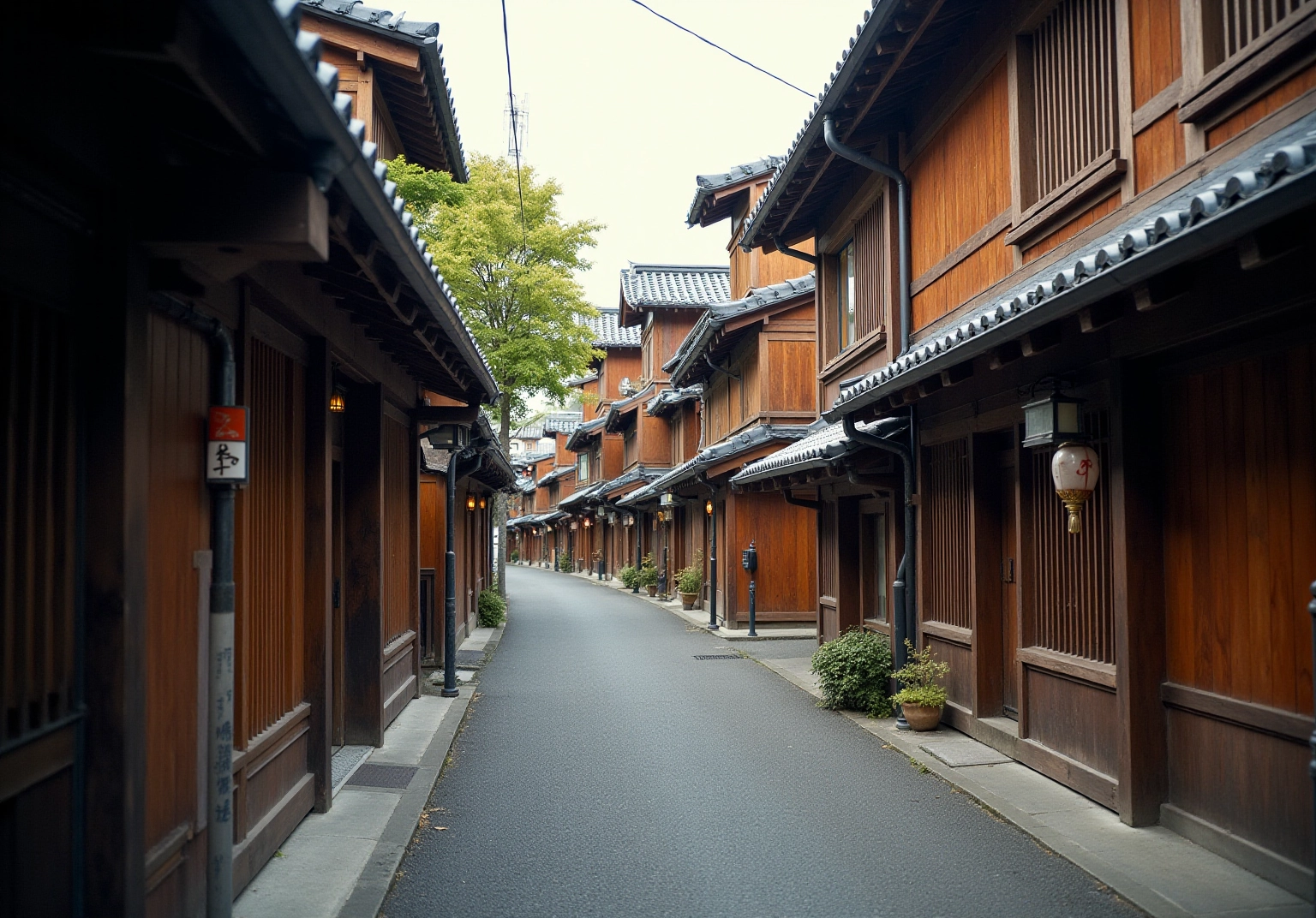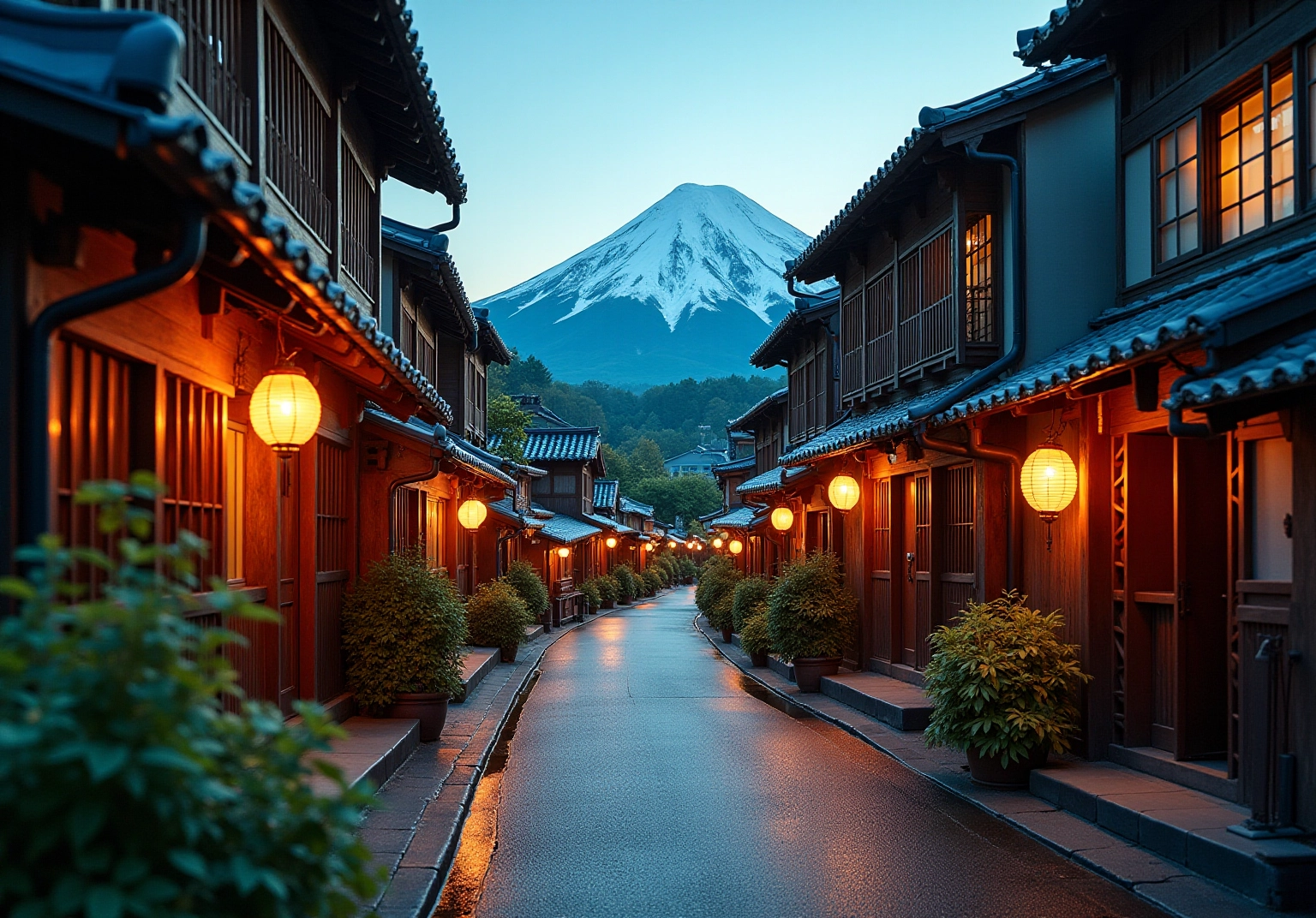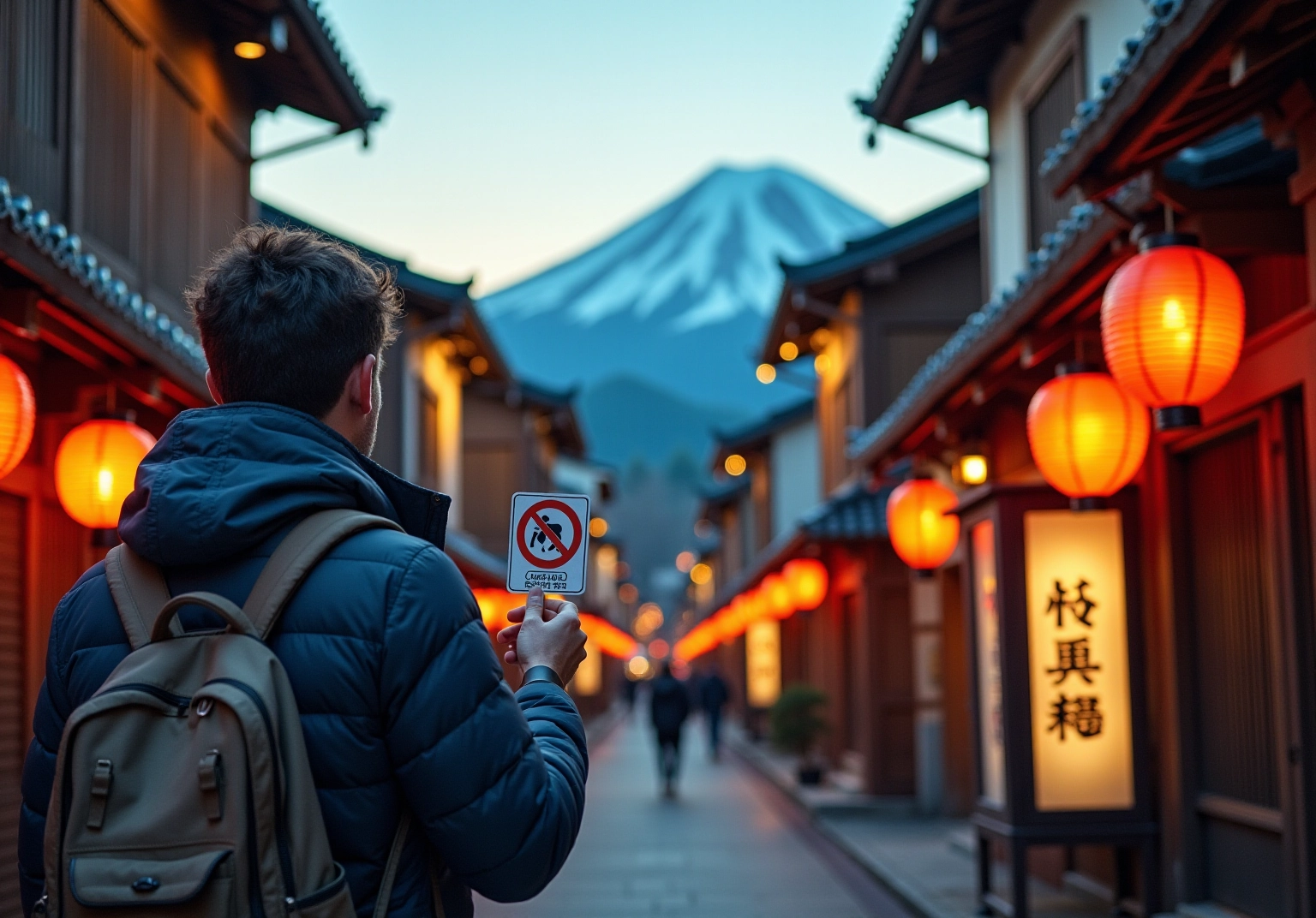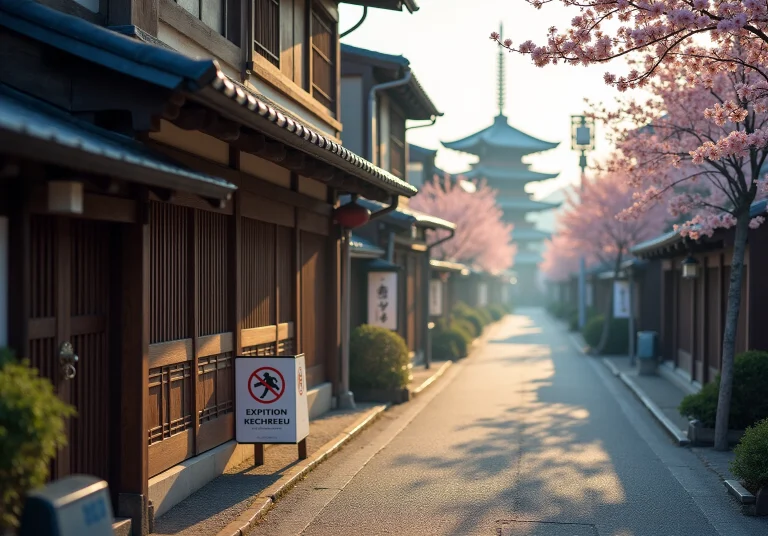Overview
Japan’s tourist ban is an exciting step towards combating overtourism and preserving cultural heritage—especially in stunning places like Gion and Mount Fuji! Imagine exploring these iconic sites while knowing that they’re being cared for and protected. The measures in place, such as capping climbers at Mount Fuji and restricting access to certain areas in Gion, really show the government’s commitment to sustainable tourism. This not only helps local communities and traditions but also encourages responsible visitor behavior.
As you plan your travels, think about how these changes can enhance your experience. You’ll get to enjoy these beautiful locations without the crowds, making your visit even more special. It’s a wonderful opportunity to connect with the culture in a meaningful way. So, why not embrace this new approach to travel? Let’s discover Japan together, keeping its treasures safe for future generations!
Key Highlights:
- Japan’s tourist ban aims to combat overtourism and protect cultural heritage, especially in areas like Gion.
- The government seeks to maintain community integrity and traditional practises amidst rising visitor numbers.
- Measures include capping daily climbers at Mount Fuji at 4,000 and introducing an entrance fee of ¥2,000.
- Residents’ concerns about disruptive tourist behaviour have prompted restrictions in Gion, including off-limits alleyways.
- Climbers on Mount Fuji will face a mandatory fee of ¥4,000 starting in 2024, with separate fees for specific routes.
- Tourists must comply with local regulations, including respecting restricted areas and obtaining health insurance.
- The new policies reflect a commitment to sustainable tourism that benefits both visitors and local communities.
Introduction
Japan’s recent decision to impose tourist bans highlights a growing concern over overtourism, especially in culturally significant areas like Gion. This initiative is all about protecting the delicate balance between preserving local heritage and welcoming visitors, ensuring that the vibrancy of these communities remains intact.
But as you look forward to exploring Japan’s rich traditions, you might be wondering:
- How will these restrictions shape the future of tourism in Japan?
- What steps can you take to engage respectfully with local cultures?
Let’s dive in!
Explore the Rationale Behind Japan’s Tourist Ban Policy
Japan’s recent decision to ban tourists is a smart response to the challenges of overtourism, especially in culturally rich areas like Gion. Have you ever noticed how these historical districts can get overwhelmed with visitors? It’s true! The government has seen how this influx disrupts community life and traditional practices. This initiative is all about protecting the integrity of these neighborhoods, ensuring that the cultural heritage and lifestyles of the residents stay vibrant, especially in light of the japan ban tourists.
This policy is part of a global trend in tourism management, where destinations strive to balance the economic perks of tourism with sustainable practices that respect local communities and environments. For example, Yamanashi Prefecture has taken steps like:
- Capping daily climbers of Mount Fuji at 4,000
- Introducing a ¥2,000 entrance fee to help ease the strain of overtourism
These actions show a real commitment to preserving the nation’s cultural heritage while promoting responsible tourism.
Now, you might be wondering why these restrictions exist. They aren’t just limitations; they’re part of a broader effort to foster respectful and meaningful exchanges between tourists and local cultures, particularly following the japan ban tourists. By deepening your understanding of Japan’s rich traditions and heritage, the government hopes to create a more sustainable tourism model that benefits both travelers and the locals. Karen LeBlanc highlights that grasping the stories behind these cultural practices can lead to more authentic travel experiences. This way, visitors can engage with local communities in a manner that truly honors their traditions and lifestyles.

Identify Key Locations Impacted by the Ban: Gion and Mount Fuji
Have you ever dreamed of exploring the enchanting streets of Gion, Kyoto’s historic geisha district? Well, the recent restrictions in Japan ban tourists, shaking things up a bit! Some alleyways are now off-limits to help ease overcrowding and preserve the traditional charm that makes this area so special. These changes came about after residents voiced their concerns about disruptive tourist behavior, particularly following the Japan ban tourists, reminding us all of the delicate balance between tourism and community well-being.
And let’s not forget about the majestic Mount Fuji! Starting in 2024, climbers will need to pay a mandatory access fee of ¥4,000 during the peak climbing season from July to September. Plus, if you’re planning to descend via the Yamanashi Yoshida route after climbing from the Shizuoka side, there’s a separate ¥2,000 fee. This initiative is part of a broader strategy to manage climbers, capping the daily number at 4,000 to prevent overcrowding and protect the environment. In fact, due to these new regulations, the number of climbers dropped from 221,322 to 204,316 in 2023, showing just how effective these measures can be!
Climbers will also need to follow some important guidelines, like:
- Not collecting plants
- Not setting up tents
These regulations not only enhance safety and enjoyment but also reflect Japan’s commitment to preserving its cultural and natural treasures, especially in light of the Japan ban tourists policy. The Yamanashi prefectural government plans to use the proceeds from these fees for environmental protection efforts, underscoring the importance of conservation. So, if you’re looking to explore these culturally rich sites, understanding these restrictions will help you engage respectfully and make the most of your adventure!

Understand Compliance Requirements for Tourists in Japan
If you’re planning a trip to Japan, it’s essential to be aware of the travel regulations, especially since Japan bans tourists. First off, be sure to respect restricted areas, especially in Gion. Did you know that wandering into certain alleyways without permission could cost you up to ¥10,000? Yikes! And while you’re exploring Kyoto, remember that taking photos on private roads can also set you back another ¥10,000. It’s a good reminder to stay in line with local rules!
For those adventurous souls looking to climb Mount Fuji, there’s a bit more to consider. You’ll need to pre-register and pay a climbing fee of ¥4,000. Plus, there’s a daily limit of 4,000 climbers to help protect the stunning environment. It’s all about keeping that beautiful landscape intact for everyone to enjoy!
Another important note: due to Japan’s ban on tourists, all arriving travelers are now required to have private health insurance. This is a big step in ensuring the safety and well-being of all guests. With nearly 48 million visitors expected in 2025, this requirement helps ease the strain on Japan’s healthcare and administrative systems.
By keeping these compliance requirements in mind, you can help foster a more sustainable and respectful tourism experience in Japan. So, gear up for an amazing adventure while being a responsible traveler!

Conclusion
Japan’s recent tourist ban is an exciting step towards sustainable tourism, focusing on preserving cultural heritage and improving the quality of life for local residents. This isn’t just a restriction; it’s a thoughtful strategy to tackle the challenges of overtourism, especially in historically rich areas like Gion and stunning sites such as Mount Fuji. By rolling out these measures, Japan aims to create a more respectful and enriching experience for both visitors and the communities they connect with.
As you dive into this topic, you’ll discover how Japan is proactively managing tourism. Initiatives like:
- Capping climbers on Mount Fuji
- Limiting access to certain spots in Gion
are designed to ease overcrowding and protect the environment. The introduction of fees and regulations emphasizes the importance of compliance for tourists, ensuring that their activities respect local traditions and ecosystems. Plus, requiring private health insurance for travelers showcases Japan’s commitment to maintaining a safe and sustainable tourism environment.
Ultimately, the significance of Japan’s tourist ban goes beyond immediate regulations; it serves as a vital reminder of the balance needed between tourism and community well-being. As you prepare for your adventures, understanding and respecting these new policies can lead to meaningful interactions and help preserve the beauty of Japan’s cultural and natural treasures for future generations. Engaging with local traditions and adhering to compliance requirements will not only enhance your travel experiences but also contribute to a sustainable tourism model that benefits everyone involved.
Frequently Asked Questions
Why has Japan implemented a tourist ban?
Japan’s tourist ban is a response to the challenges of overtourism, particularly in culturally rich areas like Gion, where the influx of visitors disrupts community life and traditional practices.
What is the goal of Japan’s tourist ban policy?
The goal of the policy is to protect the integrity of neighborhoods, ensuring that the cultural heritage and lifestyles of residents remain vibrant while promoting responsible tourism.
How is Japan’s tourist ban part of a global trend?
Japan’s ban aligns with a global trend in tourism management, where destinations seek to balance the economic benefits of tourism with sustainable practices that respect local communities and environments.
What specific measures has Yamanashi Prefecture taken to address overtourism?
Yamanashi Prefecture has capped daily climbers of Mount Fuji at 4,000 and introduced a ¥2,000 entrance fee to help ease the strain of overtourism.
What is the broader effort behind these tourism restrictions?
The restrictions aim to foster respectful and meaningful exchanges between tourists and local cultures, creating a more sustainable tourism model that benefits both travelers and locals.
How can understanding Japan’s cultural practices enhance the travel experience?
By grasping the stories behind Japan’s cultural practices, visitors can engage with local communities in a way that honors their traditions and lifestyles, leading to more authentic travel experiences.


































